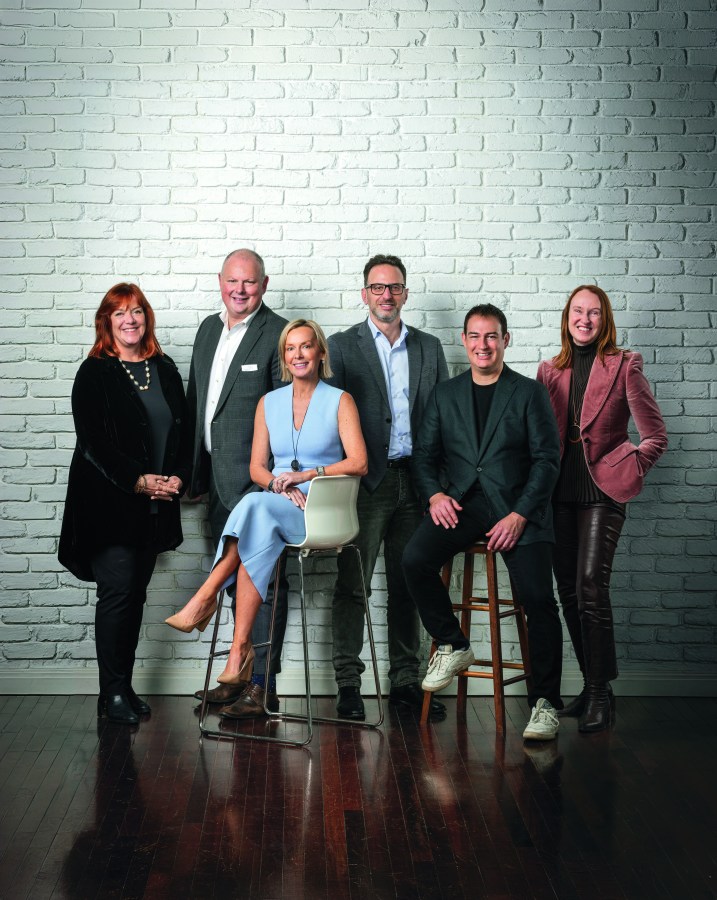Three key changes businesses must make ahead of AI revolution
As generative AI becomes less of a buzz word and more of a workplace necessity, leaders must ready their business models – and train users on safety and ethics – to get ahead of the curve.

While predictive technology has been around for some time, generative artificial intelligence (AI) is on the rise – and it’s rapidly transforming the way companies do business.
According to a 2023 survey commissioned by global AI CRM leader, Salesforce, about 90% of Australian workers are already using AI in daily work tasks, with 68% using generative AI tools. And, 82% of survey respondents said it makes them much more productive in the workplace.
“Gen AI will transform every process, company and industry,” GM and Executive Vice President, Salesforce Australia and New Zealand, Frank Fillmann, says.
“It’s the largest technological disruption since computing itself or the internet. It will alter the way every team and employee works, from boosting productivity to guiding decision-making processes and connecting businesses to their customers with unmatched precision and relevance.”
And Salesforce, the US$280 billion cloud-based CRM [customer relationship management] software company, is at the forefront of this change. In September last year, the company made headlines for launching its new Einstein product suite, which included Einstein Copilot – a generative AI-powered conversational assistant for every Salesforce application – and Einstein Copilot Studio, which allowed companies to build their own AI-powered apps.
“The reality is every company will undergo an AI transformation to increase productivity, drive efficiency, and deliver incredible customer and employee experiences,” Salesforce chair and CEO, Marc Benioff, said at the time. “In this new world, everyone can now be an Einstein.”
The International Data Corporation (IDC) estimates that the Salesforce economy in Australia could generate over $21 billion in economic benefits in 2028, and is likely to add between 7 and 9% to annual GDP.
IDC also estimates that Salesforce’s AI-powered cloud solutions could create just over 245,000 jobs in Australia by 2028, with a net gain of just over 137,000 jobs between 2022 and 2028.
“While disruption is inevitable, this revolution is also driving completely new jobs – jobs we wouldn’t have imagined even three years ago,” Fillmann says. “New jobs like prompt engineers, AI data auditors, AI ethicists, and AI solution architects, all of which will require Australians trained to fill these new opportunities.”
And as the AI revolution gains speed, business leaders need to adapt to ensure their staff are up to speed – and their strategies are in place.
How businesses can prepare for the AI revolution
According to Fillmann, there are three key things businesses must do to be ready for the changes AI will bring.
The first is to ready your mindset, Fillmann says.
“This needs to be driven by leadership. It’s about preparing your workforce, seeking ideas for use cases, forging ahead into pilots, and enabling and training your workforce on these new tools.”
The second is to ready your data.
“Collect, harmonise, and connect your data sources. It’s important that your AI tools are working with accurate data, with data that’s secure and you’ve thought about potential bias or inaccuracies.”
And lastly, ready your model.
“Determine whether you are going to operate a buy vs. build model, or a combination of both,” Fillmann says.
“Start to bring generative AI use cases into your existing work flow, looking at where your employees are spending the most time and effort. Build agents or co-pilots for every function and app and start to build actions for every agent or co-pilot. Most importantly, think about how you are going to embed trust and a moderation layer into your AI.”
But business leaders also have a role to play, Fillmann says. For example, leaders could start by working with different teams to explore use-cases of generative AI, aimed at increasing their efficiency and productivity. They could also support teams by providing space and permission to trial and test those use-cases.
And exploring your current data strategy is also a good place to start, Fillmann says: “An AI strategy is only as good as the data it has to work with.”
Safety first
Salesforce’s commissioned research found that while many Australian workers were adopting AI, just 17% of respondents had received comprehensive training from their employer on how to use the tools safely. And, 24% of Australian workers admitted to having used a generative AI platform that their employer had banned.
Fillmann says development through to use, there needs to be a focus on following trusted, safe and ethical AI guardrails. Salesforce says trust is its number-one value – one which has never been more important than in the age of generative AI.
“We can’t unlock the promise of AI without being able to trust what it generates,” Fillmann says.
One way Salesforce is pioneering safety in the AI industry is through its Office of Ethical and Humane Use, which recently published guidelines for the responsible development of generative AI.
“We have also developed the Einstein Trust Layer so companies can use large language models with their customer data without compromising data privacy and security,” he says, adding, “Our customer’s data is always theirs and is not our product”.
The company also supports tailored, risk-based AI regulation to protect individuals, build trust and encourage innovation.
“We believe companies should be required to tell people when they’re interacting with AI. This transparency is key to enabling trust,” Fillmann says.
“This revolution is not a maybe – it’s a certainty. It’s time to embrace an AI mindset, land your data strategy, build or buy your model and place trust at the heart of your strategy.”
Look back on the week that was with hand-picked articles from Australia and around the world. Sign up to the Forbes Australia newsletter here or become a member here.


